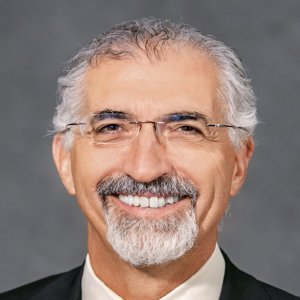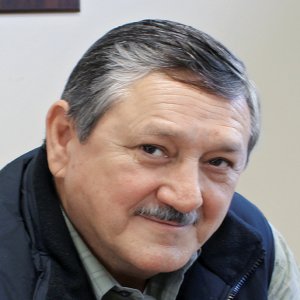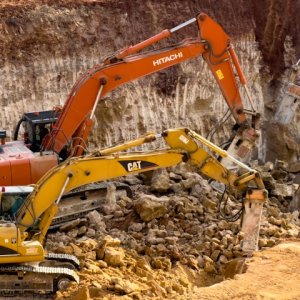Sodium Cyanide's Integral Role

Sodium Cyanide's Integral Role

STORY INLINE POST
Q: How has the drop in commodity prices impacted the requirement for your essential products and how has Cyanco reacted to this?
JD: It takes significant resources and a considerable amount of time to develop precious mineral resources so, in our experience, once the mine is operational, provided the cash cost is below the market price and the company is making profit it will continue mining. This is an almost independent factor from the gold price, and when mapping production versus gold prices over a 30 year period almost no statistical correlation can be found between both phenomena. Compared to many bulk chemicals, sodium cyanide is basically a niche chemistry with approximately a 1 million ton market. In terms of overall value, the segment represents a small, single digit percentage of mining chemicals and we typically constitute around 2-5 percent of the developer’s cash cost per ounce on average. We like to think of our segment as a mission-critical niche since without our product not a single ounce of gold can be recovered. We are also a diversified company, serving a wide range of users from the top five global producers to quite a few smaller single-mine juniors. A large part of our segmentation when deciding upon our ideal customer base is competitiveness of the resource, the mine’s potential cash cost, adaptability to possible market downturns, and profits on upturns. When the metal price decreases pressure builds throughout the industry, organizations, and value chains, but this does not reduce consumption since our product is an essential component in the mining process. In fact, consumption increases with the need to produce more ounces in order to maintain revenue on lower gold prices.
The other unique phenomenon in the sodium cyanide industry is that the amount of cyanide required for producing an ounce of gold increases exponentially as the ore grade declines. This relationship has been modeled over many years via the statistically proven Gavin Mudd formula, so as the grade decreases there is a need for more cyanide, and more ore per ounce. Due to this relationship, the cyanide industry enjoys an inherent growth in demand even when gold production drops. Nevada reached peak gold in 2008, and despite the fact that gold production has since declined by over 50 percent, our sales have increased each year. This is not a result of new customers; it can be exclusively attributed to overall ore grade decline.
Q: In what ways have you had to adapt your wrap-around services to the market here in Mexico?
JD: We place considerable importance in the International Cyanide Management Code (ICMC). We encourage all of our customers to comply with ICMC, and most of our customers are currently ICMC certified. We also provide support in this instance, with complementary site assessments, periodic operational assessments, and feedback regarding the areas in need of improvement. In terms of community involvement, we hold an annual session in Sonora to train the first responders, federal police, emergency services, ambulance drivers, and clinics. We offer the necessary information regarding the risks of cyanide, proper handling, and incident management. This service is provided in every community in which we operate across the globe.
In terms of driving cost, we offer a technology that can optimize costs and efficiency. When sodium cyanide is dissolved it becomes an extremely diluted solution, often around 150ppm. Even in multi-billion dollar mines, the molecule is handled by one operator turning several dials, and then a concentration measurement is taken, which should remain within a certain target range. If the concentration is too low the recovery will immediately drop, meaning lower production. As a result, there is a tendency to err on the high side with regards to concentrations but this increases usage of the cyanide. As a response, we have developed our Cyanide Control System (CCS), which is real-time closed loop feedback technology that has the ability to take measurements every 60 seconds at anywhere from two to six points, continuously analyzing and providing feedback to the distribution valve, meaning that the operating range is tightened, and often reducing cyanide intensity by 8-10 percent. As yet, we have not installed a CCS in Mexico, as we have found that if the technology seems overly complex, there is a certain amount of hesitance but we are actively marketing this solution in the Mexican market.
Q: What are your previous success stories using the technology that Mexican companies can use as a precedent for potential incorporation of the solution in the country?
JD: We are unique in that we provide sodium cyanide both in the solid form and in solution form, which is less well-known thus far in Mexico. In our plant in Nevada, we produce a 30 percent aqueous solution basically delivering the product in ‘as-used’ form. In most mines in Mexico the product is delivered as solid briquettes in a one ton bag or box. The box must be lowered over a splitter and the solid material dissolved by a system, requiring operator input, manual handling, and hazardous waste disposal. For our solutions customers, the process is much safer, simpler, and less time-consuming. The mine employees have no responsibility for handling the molecule, as our specialized team takes care of the entire process within 45 minutes.
LM: When comparing the costs of solid cyanide versus the solution, the savings are in the range of US$300/t. The recoveries are also optimized, and variations are mitigated since there is an accurate record of exactly what has been fed into the system. Therefore, the benefits of the technology are manifold.
JD: Another angle is that in certain regions like Zacatecas, the mines are located in areas that experience chronic water shortages. The fact that miners must use water to dissolve the solid cyanide can be problematic, and millions of dollars are often spent on systems to pump water to the mine’s location. Therefore, we ship 70 percent of water along with our product at no charge, meaning the company does not require nearly as much water to dilute the solution.
Q: In terms of environmental considerations, how do you help clients implement effective waste disposal practices?
JD: Environmental concerns are a significant part of our ethos. Although cyanide poses a danger in terms of human exposure it is actually a relatively benign chemical. It is biodegradable, it is not a heavy metal, it is not radioactive, and after use, the hazards are neutralized over time. After the mine has spent barren solution, we have technologies and equipment that we install at our customers’ sites to dilute the remaining cyanide down to a weak acid dissociable (WAD) cyanide solution with exceedingly low ppm levels, effectively eliminating its potential to damage the environment We also enjoy liaising with the local community, and we often join the mining companies in creating dialogues with local stakeholders regarding the properties and proper handling of sodium cyanide. Generally, people outside of the mining industry tend to have negative connotations of the word ‘cyanide’, and we provide useful education to the community regarding the potential risks and most effective mitigation of those risks.
LM: It is important to note that we strictly adhere to the ICMC, and we encourage all clients, even those without official certifications, to follow these regulations to the letter. Typically, we audit our clients regularly to ensure safe practices within the mines, and we provide recommendations on any aspects in need of improvement. We also provide a full route assessment before we begin to supply a new mine, evaluating the transport and infrastructure in order to ensure the safest transportation of our product and prevent hazards.
Q: How has your implementation of the vendor managed inventory (VMI) provided an added value for your customers in the mining industry?
JD: The way in which we established our company in Nevada 25 years ago centered on this local service model that we refer to as ‘worry-free delivery’. We have sensors and telemetry that allow us to monitor tank levels in real time and schedule deliveries to keep each customer’s tank levels within their desired levels. Because our facility is centrally located and the customers are all within a 300km radius, we are able to dispatch trucks 24 hours a day, with constant GPS monitoring. Our customer-centric model basically manages the entire cyanide supply process on the customers’ behalf. The ultimate goal of our worry-free delivery concept is that miners do not have to consider cyanide. Operators have multiple factors to consider when mining and we want to allow them to focus on ore extraction and precious metal recoveries. We are trying to replicate this model on a wider scale. We have a terminal in Hermosillo, a terminal in the Abitibi region of Canada, and we are preparing to build another in Zacatecas.
























